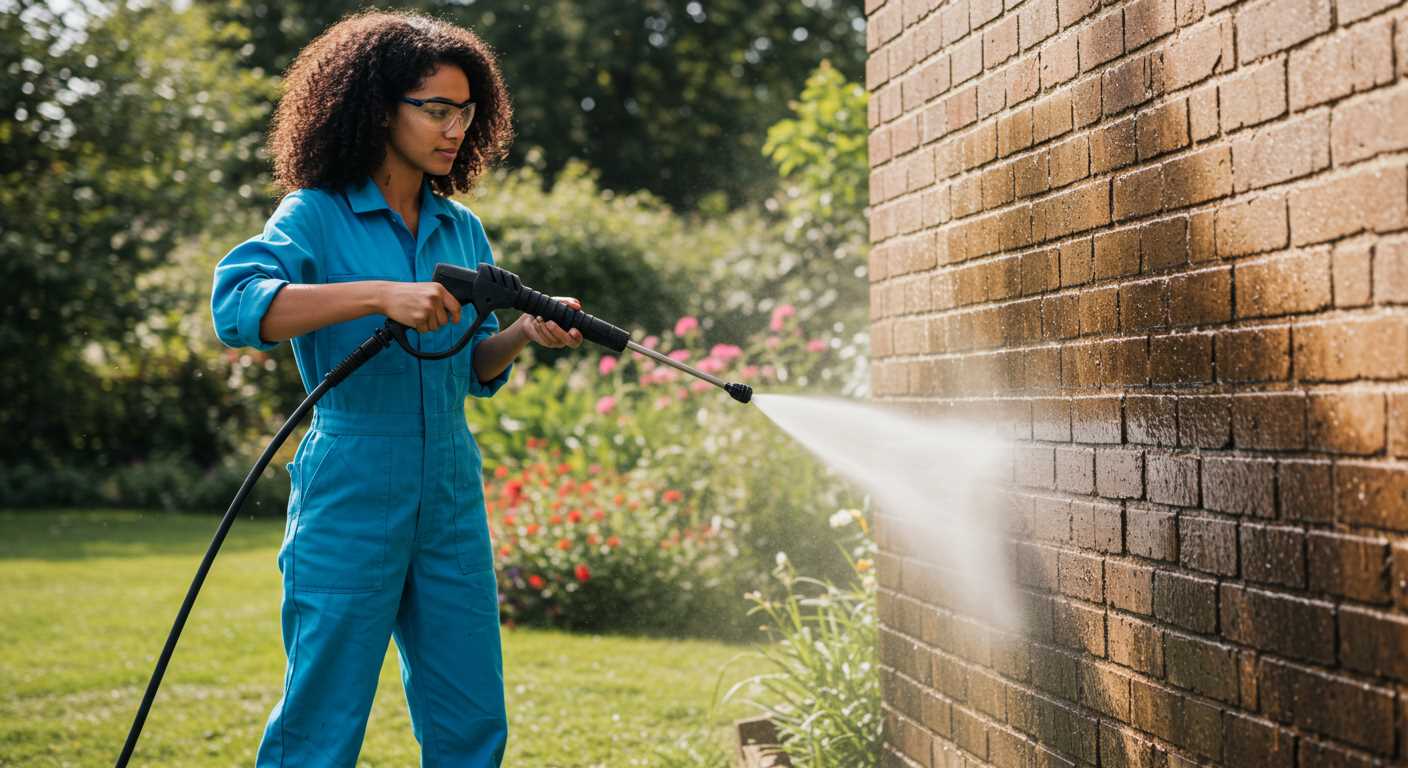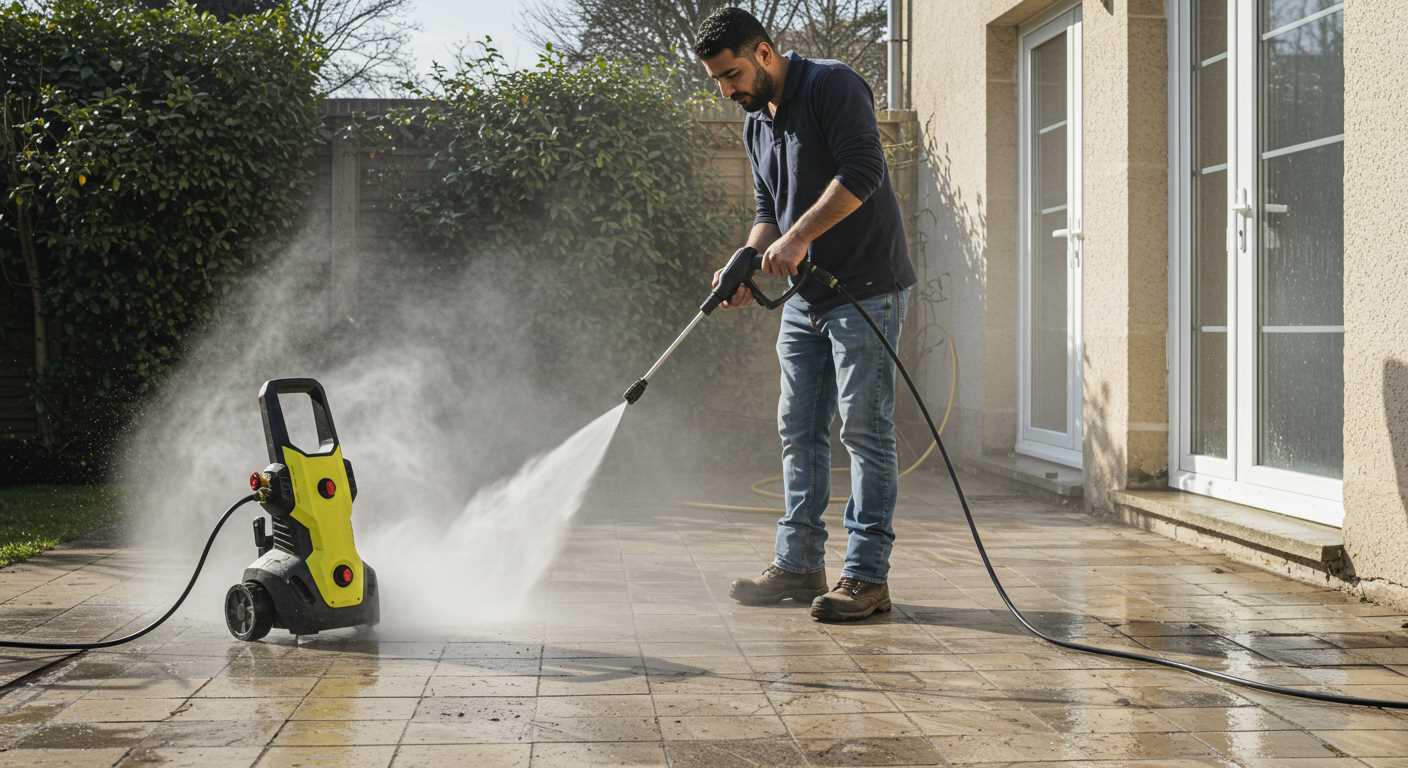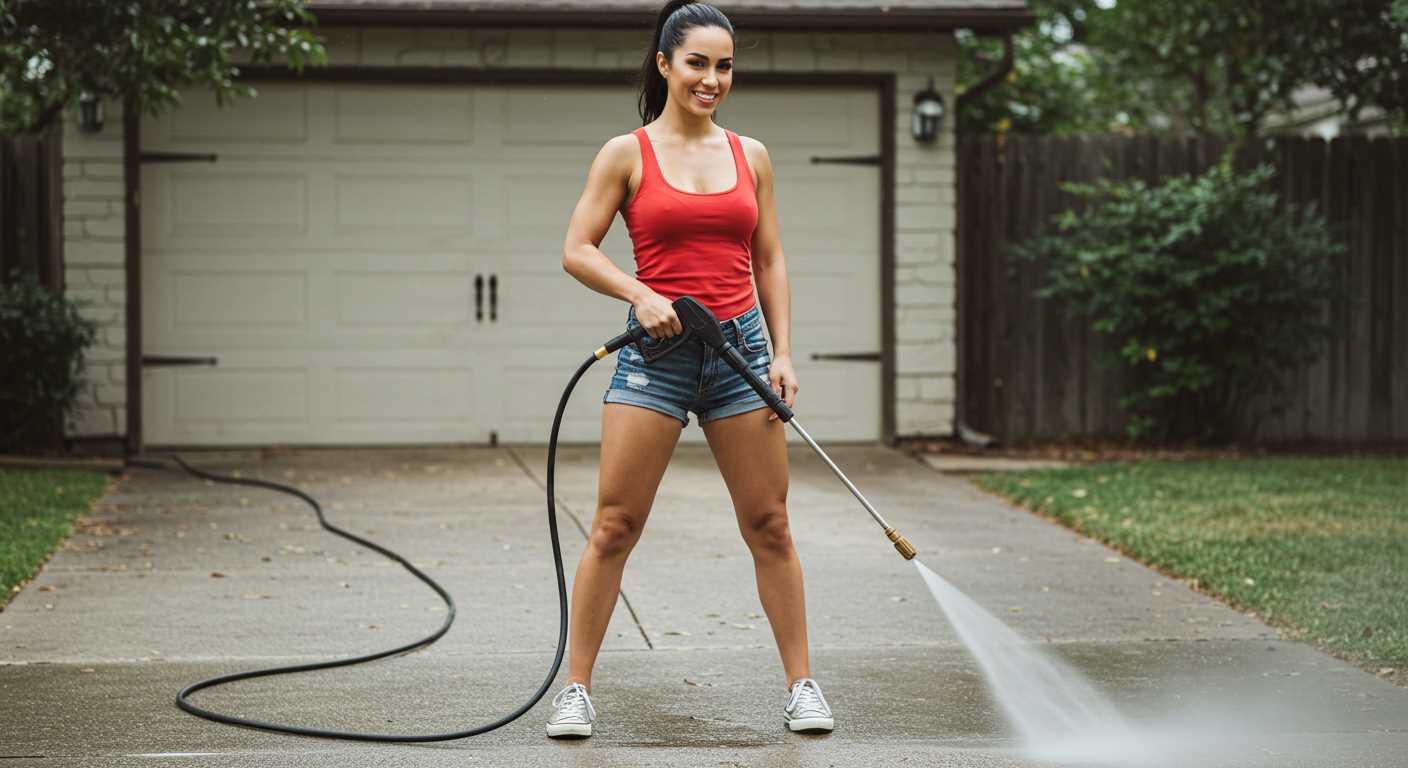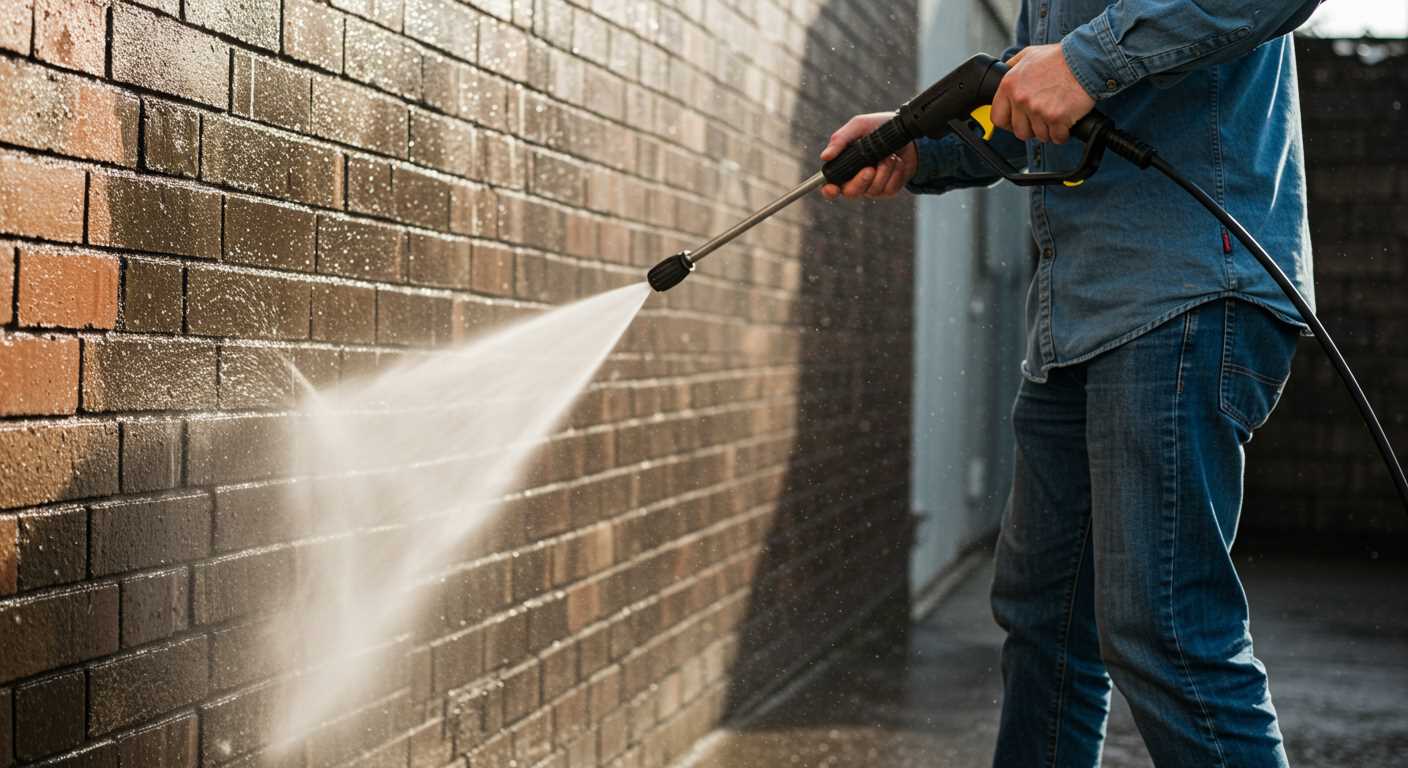



For optimal outdoor cleaning results, consider a manual high-pressure cleaning device that operates through mechanical action rather than electricity. This type of equipment generates pressure by manual effort, allowing precise control over the flow and intensity of the water. Such machines are ideal for small to medium cleaning tasks, as they rely on simple mechanics that ensure reliability and ease of use.
The core of this device involves a piston within a cylinder. When the handle is pulled or pushed, it compresses water in the chamber, forcing it out through a nozzle at high speed. This process transforms ordinary water into a powerful stream capable of removing dirt, grime, and stains from various surfaces. I’ve observed that models with adjustable nozzles offer versatility, allowing you to switch between a focused jet for stubborn stains and a wider spray for general cleaning.
It’s important to note that regular maintenance, such as checking seals and ensuring no blockages in the hoses, significantly prolongs the lifespan and effectiveness of this equipment. Additionally, water intake should be consistent; using a clean water supply enhances performance. In my experience, using one of these devices will not only make your outdoor chores more manageable but will also yield impressive results that often surpass those achieved with electric alternatives.
Understanding the Basics of Hand Pump Mechanisms
Focusing on the mechanics of this device reveals that it relies on a simple yet effective mechanism for generating pressure. The fundamental principle is the conversion of mechanical energy, which is achieved through manual operation of a plunger. This component creates a vacuum that draws water from a reservoir. The water is subsequently forced out through a nozzle at high speed when the plunger is depressed.
Key Components
- Reservoir: Stores the water, ready for use.
- Plunger: The main driver of pressure, which is operated by hand.
- Nozzle: Directs the high-velocity water stream towards the target surface.
- Hoses: Connect the reservoir to the nozzle, allowing the water to flow.
Mechanism of Action
- When the plunger is pulled up, it creates a low-pressure area in the chamber, allowing water to enter from the reservoir.
- Pushing the plunger down forces the water out through the nozzle, creating a powerful jet for cleaning.
- This cycle can be repeated as needed, enabling continuous operation until the reservoir is emptied.
It’s advisable to maintain consistent strokes when operating the plunger, as this ensures an even flow of water and maximises cleaning efficiency. Regular inspection of seals and hoses will keep the unit in optimal working condition and impede any leakage that may occur over time.
Components of a Hand Pump Pressure Washer
Familiarise yourself with the primary elements that make up these cleaning devices. Each component plays a significant role in their operation and efficiency.
Water Tank

The water tank holds the liquid used for cleaning. Typically, it features a capacity between 5 and 15 litres, sufficient for various tasks. Opt for models with transparent tanks to easily monitor levels, reducing the need for frequent refills.
Piston Assembly

One of the most critical parts, the piston assembly, generates the required pressure. This assembly generally consists of a piston, a connecting rod, and a crankshaft. Investing in washers with sturdy materials ensures longevity and consistent output.
Selecting a model with adjustable piston settings can enhance versatility, allowing you to tailor the water flow and pressure to suit different surfaces and cleaning needs.
Nozzle and Hose
The nozzle directs the flow of water and can vary in design. Interchangeable nozzles offer flexibility for various tasks, from gentle rinsing to targeted cleaning. The accompanying hose should be resistant to kinks and abrasions while providing adequate length for manoeuvrability.
Foot Pedal or Lever

Mainly used for operation, the foot pedal or lever allows for hands-free usage. This feature greatly enhances convenience during extensive cleaning sessions. Ensure the mechanism is smooth and responsive for optimal control.
Understanding these components can significantly impact your experience and results. Focusing on quality materials and design will maximise performance and longevity of your cleaning equipment.
How Water is Drawn into the Pump
Water enters the mechanism through a suction process, initiated when the lever is exerted. The downward movement creates a vacuum inside the casing, causing atmospheric pressure to push water from the reservoir or source directly into the inlet valve. This valve serves as the crucial gateway, allowing only one-way flow, ensuring that liquid does not backtrack.
Suction Valve Functionality
The suction valve opens under negative pressure, permitting water flow while simultaneously preventing it from escaping. This one-way system is vital for maintaining the effectiveness of the entire device, allowing for consistent and reliable performance. Regular inspection of the suction valve for wear or damage is advisable, as any malfunction can lead to inefficiencies in water intake.
Integration with Filter Systems
Many modern units incorporate an inlet filter designed to catch debris before it reaches the interior components. This additional layer of protection plays a significant role in prolonging the life of the equipment. I recommend routinely checking and cleaning the filter to ensure unobstructed water flow. By doing so, you enhance both the longevity and the reliability of the entire system.
The Role of Pressure Creation in Washing
Creating high levels of force is fundamental for effective cleaning with these devices. The key principle involves transforming manual force into hydraulic energy, which generates a stream of water capable of tackling tough stains and grime.
First, the process begins with compressing air within the cylinder. Each stroke of the handle increases the pressure exerted on the water inside the chamber. This cycle of compression and decompression translates directly into the intensity of the water jet produced.
The nozzle plays a significant part in defining the characteristics of that jet. Adjusting the nozzle changes the focus and spread of the water, influencing both the impact and coverage area. A narrow stream increases force, making it ideal for stubborn spots, while a wider spray is excellent for general cleaning tasks over broader surfaces.
Maintaining optimal pressure is essential for maximizing efficacy. Regular checks on seals and components help prevent leaks, ensuring that pressure remains consistent. Furthermore, using the correct attachment for the specific cleaning task can enhance results. For instance, using a rotating brush can combine scrubbing action with the power of the water jet, yielding superior results.
Effective maintenance of these mechanisms enhances longevity and reliability. Regularly purging air from the system and ensuring components are free from debris keeps performance at its peak. This attention to detail ensures tasks are completed more swiftly and with impressive outcomes.
Choosing the Right Nozzle for Different Tasks
Select the nozzle according to the task to achieve optimal results. Nozzles come in various sizes and spray patterns, each designed for specific cleaning applications.
- 0-Degree Nozzle: This nozzle delivers a concentrated stream of water. Suitable for removing tough stains like grease or grime on hard surfaces such as concrete and brick.
- 15-Degree Nozzle: Offers a wider spray pattern than the 0-degree nozzle, making it ideal for stripping paint or cleaning tough dirt from surfaces.
- 25-Degree Nozzle: A versatile choice for general cleaning tasks. Works well on driveways, sidewalks, and vehicles without causing damage.
- 40-Degree Nozzle: Provides the gentlest spray, perfect for delicate surfaces like wood decks, glass, or automobiles. Prevents potential surface damage.
- Soap Nozzle: Specifically designed to apply detergents. Utilises a wider spray with lower pressure for even distribution of soapy solution, facilitating deep cleaning.
Always test a small, inconspicuous area before cleaning larger surfaces. Adjust the nozzle distance to control the intensity of cleaning; closer for tough stains and further away for gentler tasks.
Consider the material of the surface being cleaned. Different materials require different pressure levels and spray patterns to avoid damage while ensuring thorough cleaning.
Choosing the right nozzle enhances cleaning efficiency and protects your surfaces from harm. Evaluate your cleaning needs and select accordingly.
Common Maintenance Practices for Longevity
Regular cleaning of the inlet filter is crucial. A clogged filter can restrict water flow, leading to increased strain on components. Ensure to inspect and clean it every few uses to maintain optimal performance.
Check Seals and Gaskets
Worn or damaged seals and gaskets can lead to leaks and reduced efficiency. I recommend checking these parts periodically and replacing them as necessary. This simple practice can prevent larger issues and extend the lifespan of your equipment.
Lubricate Moving Parts
Each time you finish using your device, wipe down the exterior and lubricate any moving parts, such as pivots and joints. Using the manufacturer’s recommended lubricant will help maintain smooth operation and reduce wear and tear.
Store the unit in a cool, dry place. Exposure to extreme temperatures and moisture can cause materials to degrade. Additionally, detaching hoses after use can prevent kinks and prolong their life.
Inspect the hoses for any signs of cracking or wear, replacing them immediately if damage is detected. Regular maintenance and prompt attention to issues will ensure reliability and performance over the years.
Troubleshooting Pump Issues

If the machine shows signs of weak performance or erratic behaviour, first check for clogs or leaks in the hose connections. Ensuring that all fittings are tight can prevent loss of pressure. Inspect the inlet filter for debris; a clean filter is paramount for optimal water flow.
Common Problems and Solutions
| Issue | Possible Cause | Solution |
|---|---|---|
| No pressure | Air in the line | Prime the system by running water through until all air bubbles are gone. |
| Low pressure | Blocked nozzle | Remove and clean the nozzle using a pin to dislodge debris. |
| Leaks | Worn seals | Replace seals or O-rings to stop water loss. |
| Continuous cycling | Faulty check valve | Inspect and replace the check valve if it fails to hold pressure. |
Routine Maintenance Tips
Regularly lubricate moving parts to reduce friction and wear. After use, always drain the system to prevent damage from residual water that could freeze or cause corrosion. Store in a dry place, away from direct sunlight, as prolonged exposure can degrade materials. Lastly, follow the manufacturer’s guidelines for proper operation to avoid premature wear.
Real-Life Applications and Use Cases
For outdoor enthusiasts, maintaining a clean environment is paramount. Using a high-pressure sprayer makes tasks like washing vehicles, cleaning garden furniture, and removing dirt from pathways straightforward and time-efficient. I often recommend these devices for homeowners who need practical solutions for their cleaning challenges.
In the agricultural sector, a compact device proves invaluable for sanitising livestock areas and equipment. Regular cleaning reduces the risk of disease, aiding in overall farm health. The versatility of this equipment allows farmers to adjust the intensity depending on the task, ensuring thorough cleaning without damaging surfaces.
Local businesses, such as cafes with outdoor seating, benefit immensely from portable models, especially during peak seasons. Quick clean-ups not only enhance aesthetic appeal but also attract more customers. I’ve seen establishments use these tools effectively to maintain their reputation for cleanliness.
For DIY enthusiasts, this type of cleaning apparatus excels in home improvement projects. Whether removing peeling paint before a repaint or cleaning surfaces prior to repairs, it simplifies many processes. I always tell my friends that having one on hand saves both time and effort when tackling home maintenance tasks.
Moreover, this equipment is frequently used in the construction industry. After jobs, crews use these machines to clean up equipment, tools, and even vehicles. It enhances safety by ensuring that surfaces are free of mud or debris, which could otherwise lead to accidents.
In conclusion, from residential uses to agricultural and commercial applications, the utility of these machines across various fields highlights their importance in everyday life. Their ability to adapt to different cleaning requirements makes them indispensable tools for efficiency and cleanliness.









